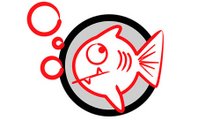Web:
www.fishfotoworldwide.com -- E-Mail: fish@fishfoto.com
28/02/08 - The Nickel-And-Diming Of Flyers - The US Airways Saga
Normally my posts stay away from editorializing about travel. I try and stick to tips, equipment and related subjects. This post is slightly different. This post is about the
nickel-and-diming of passengers.
A few weeks ago
United Airlines (
UA) changed it's baggage policy. Under the new baggage policy passengers flying on super-save fares would only be entitled to one checked piece of baggage. Your second bag would cost you $25. Under
UA's new policy passengers on most fares would be entitled to two checked bags, as would all of
UA's elite frequent flyers, and it's
Star Alliance partner's "
Star Gold" (
*G) frequent flyers.
Over the past few years I have been a loyal flyer with
US Airways (
US). My status with
US Airways'
Dividend Miles has been
Platinum, meaning I fly more than 75,000 miles per year with them. I have flown
US throughout the United States, from Boston to Fort Lauderdale; through the Midwest, into Chicago and Milwaukee; through the bright lights of Las Vegas and countless Trans-Continental flights from Philadelphia to San Francisco & Los Angeles and New York's JFK to Phoenix. I have even chosen to fly
US to London and Paris.
As a loyal
US frequent flyer I have watched the airline make some bad choices in the past two years. Many of these bad choices were brushed off as growing pains related to their merge with
America West Airlines (
HP). The integration of
HP and
US first involved two incompatible reservations systems and two completely different fleets. Merging the reservations system took an extremely long period of time and alienated many frequent flyers, but I endured. The fleets still remain separate in many ways. There is
US-East and
US-West. "
US" on the registration means you are flying a
US aircraft, "
AW" on the registration means you are flying an
HP or "
Cactus" aircraft. The seat maps often don't match up, making choosing your seats a crap-shoot, and certain expected amenities are not universal. A good example of this is all
US Airbus aircraft have in-seat
emPower outlets in every seat, both first and economy class and the
HP aircraft do not generally have any in-seat power in any seat.
As the merger progress the management in Tempe promised it's frequent flyers more benefits. These "benefits" including the removal of the coat closet on some planes making it harder to hang up your coat. Other "benefits" involved the removal of a significant number of first class seats on many planes. This "upgrade" in the aircraft seating made getting an upgrade as an elite frequent flyer extremely difficult.
As the aircraft "upgrades" continued
US reconfigured it's inter-continental
Airbus A330-300 (
A333) aircraft with the removal of the addition 2" of leg room in the economy section, in rows 6-through-21. What a great upgrade, yes?
Many airlines have switched to
Buy-on-Board meals, often called "
BOBs" This is annoyance, but it has become commonplace. Most airlines charge
$5 for a
snack box while
US charges
$7 and offers you less food for $2 more.
To further "enhance" your experience in booking tickets with
US, they instituted a $10 fee for tickets purchased through reservations; a $20 fee for tickets issued at the airport or a city ticket office and even a $5 fee for some tickets purchased on
www.usairways.com!
Now I'm sure you're saying, "Wow, what else can
US Airways Nickel-and-Dime you for? Well let me tell you...........
If you are a
Chairman's Club member, you're now paying for your drinks. Sure you are paying your annual dues for the lounge, but the drinks are no longer on the house.
In an absolutely stunning move, recently
US Airways removed the "
500 mile minimum" frequent flyer miles received while flying on any flight. You take a 100 mile flight you get 500 miles, you fly 498 miles you get 500 miles. This is standard with every airline I know of. Well, now
US started a new policy, if you fly 271 miles, you get 271 miles.
US built its self up on east coast business routes. These flights are high cost, high traffic routes, such as Boston (BOS)-New York (LGA); New York (LGA) - Washington DC (DCA) ; Charlotte (CLT)- Norfolk (ORF) and other short routes of under 500 miles. My common New Haven (HVN) - Philadelphia (PHL) flight is 157 miles and it now averages more than US$700 to fly it! That is a short flight on a turbo-prop aircraft and they won't do the
500 mile minimum.
Oddly enough, I can fly from HVN to San Francisco (SFO) via PHL for US$379......but if I get off in PHL, it's US$739. Now , I am no economist, but why does it cost US$360 LESS to fly an extra 5042 miles round trip? With this logic I should be getting 10,000 miles not 157 miles in my account because I am paying more for less miles.
Still think it can't get worse? Well, kick back and grab a can of soda, because I'm not done yet................ Yesterday afternoon,
US Airways sent out an e-mail informing us that they will now be charging US$25 for a 2nd checked bag! That's right, a $25 for your 2nd checked bag.
How does this affect you? Well now airlines are not only charging heft fees to fly the, but all the hidden additional fees are just piling up. What do you get in return? You get less frequent flyer miles which means less award travel using your miles and must slimmer opportunities to reach an "elite status."
If for some reason the executives at the
US Airways HQ in Tempe are reading this, let me sum myself up quickly here:
THIS IS NOT HOW YOU SHOULD TREAT YOUR MOST VALUABLE CUSTOMERS!
Happy Flying!
(on some other airline)











Techwick.jpg)








